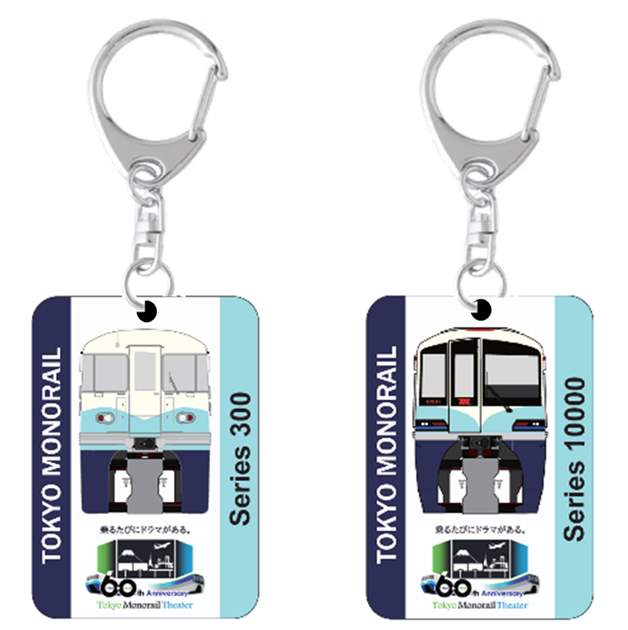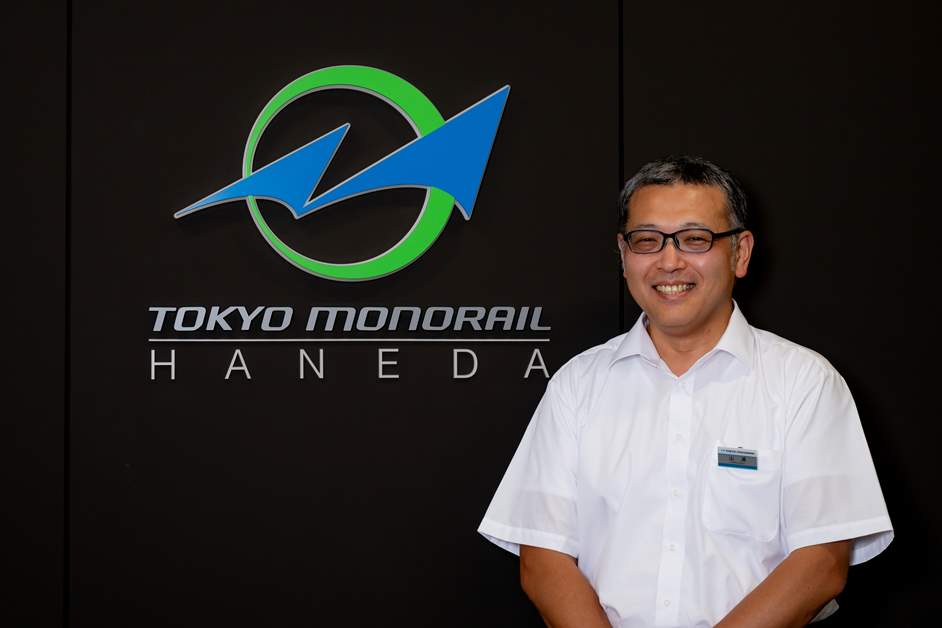Whole Host of Events to Celebrate 60th Anniversary! History of Tokyo Monorail; a Line Connecting Minato-ku to Haneda Airport
In September 2024, the Tokyo Monorail Line, which connects Monorail Hamamatsucho Station to Haneda Airport Terminal 2 Station, celebrated its 60th anniversary. Tokyo Monorail, which first began its passenger service on September 17, 1964, just prior the hosting of the 1964 Tokyo Summer Olympic Games, has continued to carry a great many passengers right up to the present day. In this article, we will look back over the history of Tokyo Monorail and introduce some of the projects and other events being held to celebrate its 60th anniversary. This article consists of a conversation covering a range of subjects with employees of Tokyo Monorail Co.,Ltd.: Mr. Toshimasa Tsujiuchi, Sales Manager of the Sales Department and Mr. Katsuhiro Yamaura, Sales Assistant Section Chief of the Sales Department.
Looking Back over 60 Years of History
――This year, Tokyo Monorail celebrates its 60th anniversary. Could you please tell us a little about what you know about when the company began passenger services?
Katsuhiro Yamaura (hereinafter, “Yamaura”): “Given that the line opened 60 years ago, I don’t think that there is anybody left in the company who can speak first hand as to what things were like back then. Speaking to what I have read in documentation from the time, it seems that many passengers first rode the line because it was something of a novelty seeing as how it was the first fully-fledged straddle-beam monorail for passenger use in Japan. Although saying that, I think the fare was quite high for the time. This was at a time where the starting fare for riding Japanese National Railways (JNR) was just ¥10. So, with the fare for the monorail being ¥250, the numbers of passengers riding the line naturally fell back a little once the celebratory period for the line opening was over.”
Toshimasa Tsujiuchi (hereinafter, “Tsujiuchi”): “There weren’t too many many people using airlines at the time. And, because the monorail was privately funded, I think, with circumstances being what they were, the company basically had little choice but to make the fare as high as it was. In May 1965, the year after the line opened, Oikeibajo-Mae Station, the first intermediate stop on the line, opened. From there, it seems like revenues gradually began to increase.”
Katsuhiro Yamaura (hereinafter, “Yamaura”): “Given that the line opened 60 years ago, I don’t think that there is anybody left in the company who can speak first hand as to what things were like back then. Speaking to what I have read in documentation from the time, it seems that many passengers first rode the line because it was something of a novelty seeing as how it was the first fully-fledged straddle-beam monorail for passenger use in Japan. Although saying that, I think the fare was quite high for the time. This was at a time where the starting fare for riding Japanese National Railways (JNR) was just ¥10. So, with the fare for the monorail being ¥250, the numbers of passengers riding the line naturally fell back a little once the celebratory period for the line opening was over.”
Toshimasa Tsujiuchi (hereinafter, “Tsujiuchi”): “There weren’t too many many people using airlines at the time. And, because the monorail was privately funded, I think, with circumstances being what they were, the company basically had little choice but to make the fare as high as it was. In May 1965, the year after the line opened, Oikeibajo-Mae Station, the first intermediate stop on the line, opened. From there, it seems like revenues gradually began to increase.”
*Image colorized with AI
――And, with that, I assume that it gradually became more of a daily fixture for people? Were there any other matters which acted as turning points in the line’s fortunes?
Tsujiuchi: “I think the extending of the line in 1993 was something of a major event. Haneda Station, which was the previous terminus for the monorail, was situated close to what is now Haneda Airport Terminal 3 Station; however, with the extension of the monorail line in September 1993, use of this original station was discontinued. In its place, the relocated Haneda Station (currently: Tenkubashi Station), Shin Seibijo Station, and Haneda Airport Station were opened. The line was further extended in December 2004 to serve Haneda Airport Terminal 2 Station and, by way of re-routing part of the line, to Haneda Airport Terminal 3 Station, which was opened in 2010. This work to connect the line to Haneda Airport Terminal 3 Station was carried out throughout the night and on into the early morning.”
Yamaura: “Tokyo Monorail is directly connected to Haneda Airport Terminal 3 Station, but, given that the rail lines run alongside the Tamagawa River, the original plan was to build a station around there. However, out of consideration for the convenience of passengers, it was decided that it would be better to reroute the track to link it up directly to the airport terminal.”
Tsujiuchi: “I think the extending of the line in 1993 was something of a major event. Haneda Station, which was the previous terminus for the monorail, was situated close to what is now Haneda Airport Terminal 3 Station; however, with the extension of the monorail line in September 1993, use of this original station was discontinued. In its place, the relocated Haneda Station (currently: Tenkubashi Station), Shin Seibijo Station, and Haneda Airport Station were opened. The line was further extended in December 2004 to serve Haneda Airport Terminal 2 Station and, by way of re-routing part of the line, to Haneda Airport Terminal 3 Station, which was opened in 2010. This work to connect the line to Haneda Airport Terminal 3 Station was carried out throughout the night and on into the early morning.”
Yamaura: “Tokyo Monorail is directly connected to Haneda Airport Terminal 3 Station, but, given that the rail lines run alongside the Tamagawa River, the original plan was to build a station around there. However, out of consideration for the convenience of passengers, it was decided that it would be better to reroute the track to link it up directly to the airport terminal.”
――The rolling stock used on Tokyo Monorail have undergone several model changes over this past sixty years. Have any of the models been uniquely popular with users and fans of Tokyo Monorails?
Yamaura: “Each model has been innovative in its own way and each has had its own unique appeal. The original 100 series vehicles used when the line first opened were slightly shorter that the current stock, with a carriage length of around ten meters. At the time, units were comprised of three carriages, with services running in either single or double unit formations."
Yamaura: “Each model has been innovative in its own way and each has had its own unique appeal. The original 100 series vehicles used when the line first opened were slightly shorter that the current stock, with a carriage length of around ten meters. At the time, units were comprised of three carriages, with services running in either single or double unit formations."
――What have been some of the developments since the 100 series?
Yamaura: “After the 100 series came the 500 series. These carriages had a length of around fifteen meters and were also designed to allow the carriages to swivel relative to the fixed axis system used on the 100 series, which made for a more comfortable ride for passengers.
Tsujiuchi: “The 500 series formed the basis for subsequent monorail rolling stock. From that point on, the stock underwent several model changes, with each model serving as a refinement on what came before.”
Yamaura: “The 500 series, 700 series and 800 series all used the familiar red and white body color. For those over a certain age, Tokyo Monorail is probably indelibly associated with this image of a red and blue body color. Up until this point, units were comprised of two carriages, with services running in formations of either two or three connected units, up to a maximum of six carriages.”
Yamaura: “After the 100 series came the 500 series. These carriages had a length of around fifteen meters and were also designed to allow the carriages to swivel relative to the fixed axis system used on the 100 series, which made for a more comfortable ride for passengers.
Tsujiuchi: “The 500 series formed the basis for subsequent monorail rolling stock. From that point on, the stock underwent several model changes, with each model serving as a refinement on what came before.”
Yamaura: “The 500 series, 700 series and 800 series all used the familiar red and white body color. For those over a certain age, Tokyo Monorail is probably indelibly associated with this image of a red and blue body color. Up until this point, units were comprised of two carriages, with services running in formations of either two or three connected units, up to a maximum of six carriages.”
――I think that there are a lot of people who feel nostalgia for this period.
Yamaura: “Development of the 1000 series, which we still use to this day, was completed in 1989. With this new series, the two carriage unit was abolished, with a fixed six-carriage formation being settled on instead. At this point, an observation seat was also added to the front carriage in an attempt to give the line some appeal as a tourist attraction in addition to it being primarily used by commuters."
Yamaura: “Development of the 1000 series, which we still use to this day, was completed in 1989. With this new series, the two carriage unit was abolished, with a fixed six-carriage formation being settled on instead. At this point, an observation seat was also added to the front carriage in an attempt to give the line some appeal as a tourist attraction in addition to it being primarily used by commuters."
――I get excited just by looking out of the normal windows when riding the monorail, never mind from an observation seat.
Tsujiuchi: “There are some areas where you pass between buildings and other areas where you can look out onto the canals and Tokyo Bay. You can even see Tokyo Tower, Tokyo Skytree, and even Mt. Fuji off in the distance. Also, while regular train lines require overhead electrical wires and their accompanying poles, the electrical power source runs alongside the tracks on the monorail, meaning that you don’t have any poles obstructing your view. So, in that sense, I think that the view you get from the monorail is really something that you cannot experience elsewhere.”
――I bet overseas visitors will love the view out of the train window.
Tsujiuchi: “I think so too. Currently, about 40% of passengers on Tokyo Monorail are commuting to work or school, and 60% are using it to travel to Haneda Airport. In particular, the number of overseas passengers has exceeded pre-Covid-19 figures. The numbers riding the monorail are really high. So, in response to this, we have, in addition to using face-to-face guidance, introduced a system that allows us to communicate with overseas visitors in chat format via a smartphone and using machine translation.”
Tsujiuchi: “There are some areas where you pass between buildings and other areas where you can look out onto the canals and Tokyo Bay. You can even see Tokyo Tower, Tokyo Skytree, and even Mt. Fuji off in the distance. Also, while regular train lines require overhead electrical wires and their accompanying poles, the electrical power source runs alongside the tracks on the monorail, meaning that you don’t have any poles obstructing your view. So, in that sense, I think that the view you get from the monorail is really something that you cannot experience elsewhere.”
――I bet overseas visitors will love the view out of the train window.
Tsujiuchi: “I think so too. Currently, about 40% of passengers on Tokyo Monorail are commuting to work or school, and 60% are using it to travel to Haneda Airport. In particular, the number of overseas passengers has exceeded pre-Covid-19 figures. The numbers riding the monorail are really high. So, in response to this, we have, in addition to using face-to-face guidance, introduced a system that allows us to communicate with overseas visitors in chat format via a smartphone and using machine translation.”
Holding and Planning a Variety of Commemorative Events
――Could you please tell us about some of the events being held to celebrate the 60th anniversary of Tokyo Monorail? For example, a logo was created to celebrate the 60th anniversar, right?
Yamaura: “The logo was created by one of our employees, who incorporated the Tokyo Monorail concept of “Tokyo Monorail Theater~A New Story With Every Ride~” into the logo’s design. That company employee who came up with the logo normally works as a station attendant.”
Yamaura: “The logo was created by one of our employees, who incorporated the Tokyo Monorail concept of “Tokyo Monorail Theater~A New Story With Every Ride~” into the logo’s design. That company employee who came up with the logo normally works as a station attendant.”
――So, it wasn’t something created by a professional designer? That’s amazing for such a well-designed logo.
Tsujiuchi: “Actually, quite a few of the events and projects we’re going to be talking about here were only made possible thanks to ideas solicited from employees from other departments. It wasn’t all us in the Sales Department. We wanted all employees in the company to be actively involved in marking the 60th anniversary rather than having them isolated away focused solely on their daily duties. ”
――On July 13th, an event called the “Noryo High Ball Ressha Tour (Tentative Translation: Highballs on a Cool Summer Evening Rail Tour)” was run to mark the occasion. Was this an idea from a company employee from another department too?
Tsujiuchi: “This project was actually mainly my little pet project. Haha! We chartered a special train and had the owner of a bar famous for its highball cocktails join the group on board, where they then proceeded to serve the passengers highballs from their server. Thanks to their presence on board, we were able to hit the maximum number of passengers in no time. The event consisted of a round trip between Hamamatsucho Station and Haneda Airport, but on the return trip, we dimmed the lights inside the carriage to allow everyone to enjoy the airport and Rainbow bridge lit up at night.”
Tsujiuchi: “Actually, quite a few of the events and projects we’re going to be talking about here were only made possible thanks to ideas solicited from employees from other departments. It wasn’t all us in the Sales Department. We wanted all employees in the company to be actively involved in marking the 60th anniversary rather than having them isolated away focused solely on their daily duties. ”
――On July 13th, an event called the “Noryo High Ball Ressha Tour (Tentative Translation: Highballs on a Cool Summer Evening Rail Tour)” was run to mark the occasion. Was this an idea from a company employee from another department too?
Tsujiuchi: “This project was actually mainly my little pet project. Haha! We chartered a special train and had the owner of a bar famous for its highball cocktails join the group on board, where they then proceeded to serve the passengers highballs from their server. Thanks to their presence on board, we were able to hit the maximum number of passengers in no time. The event consisted of a round trip between Hamamatsucho Station and Haneda Airport, but on the return trip, we dimmed the lights inside the carriage to allow everyone to enjoy the airport and Rainbow bridge lit up at night.”
――It sounds like a really fun tour. I hear you have a tour planned for the fall too?
Yamaura: “We’re still in the planning stage, but the idea is for a tour in November that will encompass a visit to the monorail depot along with a tour combining the nighttime backdrop of the monorail and the Tokyo Mega Illumi at the Oi Racecourse.
Tsujiuchi: “There are no designated tour routes through the depot, so it’s not something that most people get to see normally. Such a special tour is only possible as part of Tokyo Monorail’s 60th anniversary events. Information about how to take part in the tour will be listed on the company website, so please check it out if you are interested in applying.”
Yamaura: “We’re still in the planning stage, but the idea is for a tour in November that will encompass a visit to the monorail depot along with a tour combining the nighttime backdrop of the monorail and the Tokyo Mega Illumi at the Oi Racecourse.
Tsujiuchi: “There are no designated tour routes through the depot, so it’s not something that most people get to see normally. Such a special tour is only possible as part of Tokyo Monorail’s 60th anniversary events. Information about how to take part in the tour will be listed on the company website, so please check it out if you are interested in applying.”
Wrapped Train and Event Merchandise For Sale
――Since September 15th, a service featuring a wrapped train celebrating Tokyo Monorail’s 60th anniversary has been running.
Yamaura: “At the time of the 39th anniversary of the line's opening, Tokyo Monorail held a celebratory event called the “Thank You Campaign” in which the 1000 series carriages were repainted in the colors of the carriages used during the line’s early years. For the current event, we have wrapped some of the new 10000 series carriages to reproduce the colors of those same early years.”
Yamaura: “At the time of the 39th anniversary of the line's opening, Tokyo Monorail held a celebratory event called the “Thank You Campaign” in which the 1000 series carriages were repainted in the colors of the carriages used during the line’s early years. For the current event, we have wrapped some of the new 10000 series carriages to reproduce the colors of those same early years.”
――The wrapped train is limited to a single train formation, right? What do people need to do if they want to see it?
Yamaura: “People should ask one of the station attendants. They should be able to tell you around what time the train will be running. Incidentally, in the areas inside the train where you would normally find advertisement posters, we have displayed photographs of the older carriages in chronological order of when they came into service. I hope that this adds another element of fun for the passengers. I hope lots of people are excited to ride the monorail and see all this for themselves.”
Tsujiuchi: “The wrapped train was unveiled on September 15th with a special ceremony to mark its departure from Haneda Airport Terminal 2 Station. We even brought in a wind ensemble from Shinagawa Yashio Gakuen to give a mini-concert for everyone."
Yamaura: “People should ask one of the station attendants. They should be able to tell you around what time the train will be running. Incidentally, in the areas inside the train where you would normally find advertisement posters, we have displayed photographs of the older carriages in chronological order of when they came into service. I hope that this adds another element of fun for the passengers. I hope lots of people are excited to ride the monorail and see all this for themselves.”
Tsujiuchi: “The wrapped train was unveiled on September 15th with a special ceremony to mark its departure from Haneda Airport Terminal 2 Station. We even brought in a wind ensemble from Shinagawa Yashio Gakuen to give a mini-concert for everyone."
――What other events do you have planned for the coming months?
Tsujiuchi: “One of the biggest that we have planned is the ‘3rd Monorail Summit,’ which will be held in the Hamamatsucho area on November 4th. There are currently eight companies operating monorails in Japan, and this summit will give them an opportunity to come together to sell merchandise and engage in panel discussions and talk-show type events. It’s basically a festival to create excitement around the monorail industry. The 1st and 2nd summits were held, respectively, at Shonan Monorail’s Shonan-Enoshima Station and at the Osaka Expo Railway Festival hosted by Osaka Monorail. So, seeing as how this next summit falls in perfectly with the 60th anniversary of Tokyo Monorail, we decided to offer to host it.”
Tsujiuchi: “One of the biggest that we have planned is the ‘3rd Monorail Summit,’ which will be held in the Hamamatsucho area on November 4th. There are currently eight companies operating monorails in Japan, and this summit will give them an opportunity to come together to sell merchandise and engage in panel discussions and talk-show type events. It’s basically a festival to create excitement around the monorail industry. The 1st and 2nd summits were held, respectively, at Shonan Monorail’s Shonan-Enoshima Station and at the Osaka Expo Railway Festival hosted by Osaka Monorail. So, seeing as how this next summit falls in perfectly with the 60th anniversary of Tokyo Monorail, we decided to offer to host it.”
――Do you have much interaction with other monorail companies outside of events like these?
Tsujiuchi: “Yes, we do. There are regular meetings held between various management-level people in the companies, as well as a meeting of the presidents. The technology underpinning monorails is unique, so it is important that we engage in lateral communication.
――Will there be Tokyo Monorail merchandise for sale at the ‘3rd Monorail Summit’?
Yamaura. “Absolutely. The first thing that comes to mind is keychains. We have two types available. One features an image of the front-side of the 300-series carriage, which was the model used when the line first opened, while the other has an image of the front-side of the current 10000 series wrapped carriage. We also have replica nameplates of those plates used on the 1000 series and acrylic station nameplates. All of these can also be bought at the customer service counters in specific stations. Please ask a station attendant if you would like more information.”
Tsujiuchi: “Yes, we do. There are regular meetings held between various management-level people in the companies, as well as a meeting of the presidents. The technology underpinning monorails is unique, so it is important that we engage in lateral communication.
――Will there be Tokyo Monorail merchandise for sale at the ‘3rd Monorail Summit’?
Yamaura. “Absolutely. The first thing that comes to mind is keychains. We have two types available. One features an image of the front-side of the 300-series carriage, which was the model used when the line first opened, while the other has an image of the front-side of the current 10000 series wrapped carriage. We also have replica nameplates of those plates used on the 1000 series and acrylic station nameplates. All of these can also be bought at the customer service counters in specific stations. Please ask a station attendant if you would like more information.”
――Besides the merchandise, is there anything else you think monorail fans might like to get their hands on?
Yamaura: “Although this wasn’t a project spearheaded by us at Tokyo Monorail, there is a novel called ‘Mono’ for sale by the author Fuminori Onodera, which is based around the operating of Tokyo Monorail and the people whose lives it touches. I’d strongly recommend that fans of monorails give it a read.”
Tsujiuchi: “For the novel, Mr Onodera actually contacted the company requesting an interview for his research. As well as the interview, we also showed him around the factory on Showajima where the rolling stock are manufactured. He used all of this as research for his novel."
Yamaura: “Although this wasn’t a project spearheaded by us at Tokyo Monorail, there is a novel called ‘Mono’ for sale by the author Fuminori Onodera, which is based around the operating of Tokyo Monorail and the people whose lives it touches. I’d strongly recommend that fans of monorails give it a read.”
Tsujiuchi: “For the novel, Mr Onodera actually contacted the company requesting an interview for his research. As well as the interview, we also showed him around the factory on Showajima where the rolling stock are manufactured. He used all of this as research for his novel."
――It’s amazing that the monorail has become such a fixture in our lives that it can now be used as a basis for a novel. So, how do you see Tokyo Monorail evolving in the future?
Tsujiuchi: “Until recently, the general sense has been that Tokyo Monorail’s role has been to transport passengers between the Tokyo metropolitan area and Haneda Airport. However, in the past few years, there has been a large increase in the number of passengers from overseas. Therefore, with an eye to the future, we have been thinking about ways that we can broaden our perspective and hopefully use the service for bringing overseas tourists, people from other regions, and those returning to Tokyo from the airport right into heart of the city.
Yamaura: “While it is extremely important that we continue to ensure a safe and reliable service for our passengers who use the monorail as part of their daily commute and those who use it to travel to the airport, we also want to evolve as a monorail such that we can co-exist more harmoniously with the communities that live along the line and grow together."
Tsujiuchi: “Until recently, the general sense has been that Tokyo Monorail’s role has been to transport passengers between the Tokyo metropolitan area and Haneda Airport. However, in the past few years, there has been a large increase in the number of passengers from overseas. Therefore, with an eye to the future, we have been thinking about ways that we can broaden our perspective and hopefully use the service for bringing overseas tourists, people from other regions, and those returning to Tokyo from the airport right into heart of the city.
Yamaura: “While it is extremely important that we continue to ensure a safe and reliable service for our passengers who use the monorail as part of their daily commute and those who use it to travel to the airport, we also want to evolve as a monorail such that we can co-exist more harmoniously with the communities that live along the line and grow together."
――As the 60th anniversary celebrations come to pass, I imagine that the vision for the next ten years will become the focus.
Tsujiuchi: “By the time the next anniversary celebrations come into view, the environment at Haneda Airport is likely to be have changed somewhat. The East Japan Railway Company group companies are on track to open the Haneda Airport Access Line (tentative name) by 2031. We hope that our company can continue to grow by working in tandem and harmony with this new line. I hope that passengers will continue to use our monorail service with the same joy and peace of mind as they have done up until now.”
Tsujiuchi: “By the time the next anniversary celebrations come into view, the environment at Haneda Airport is likely to be have changed somewhat. The East Japan Railway Company group companies are on track to open the Haneda Airport Access Line (tentative name) by 2031. We hope that our company can continue to grow by working in tandem and harmony with this new line. I hope that passengers will continue to use our monorail service with the same joy and peace of mind as they have done up until now.”
<Tokyo monorail Co., Ltd.>
https://www.facebook.com/visit.minato.city.en/
https://www.facebook.com/visit.minato.city.en/




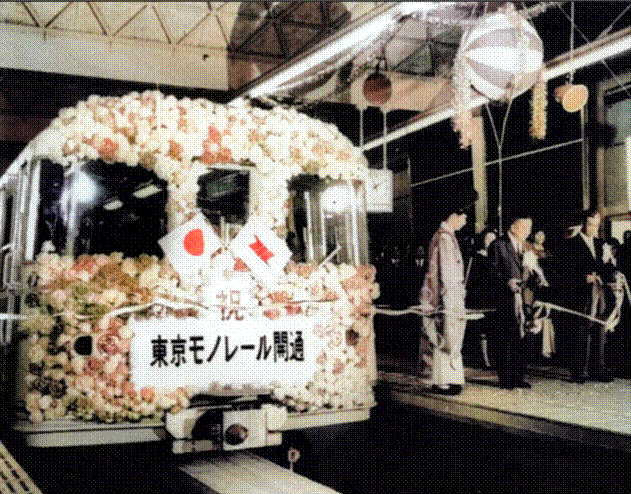
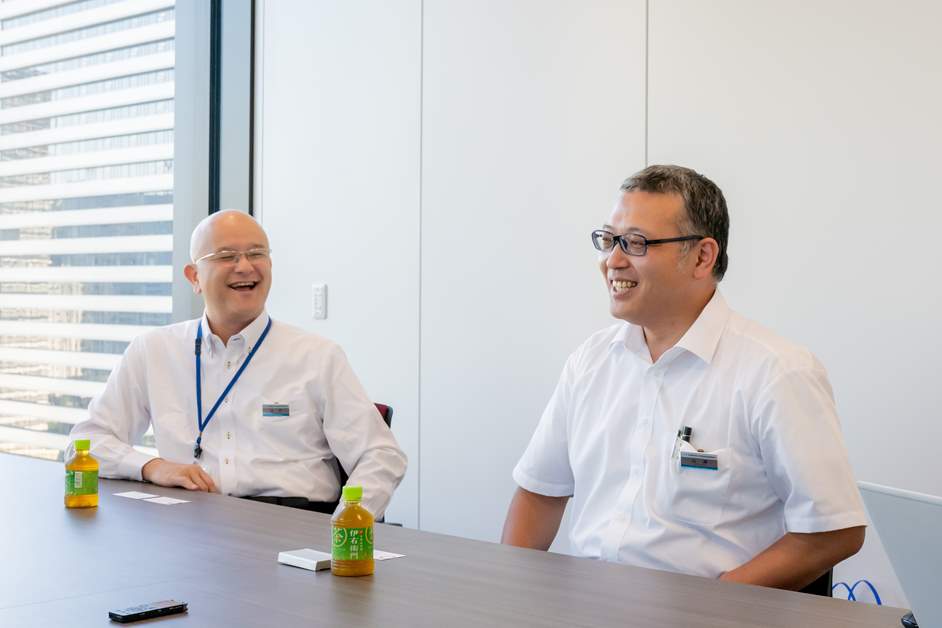
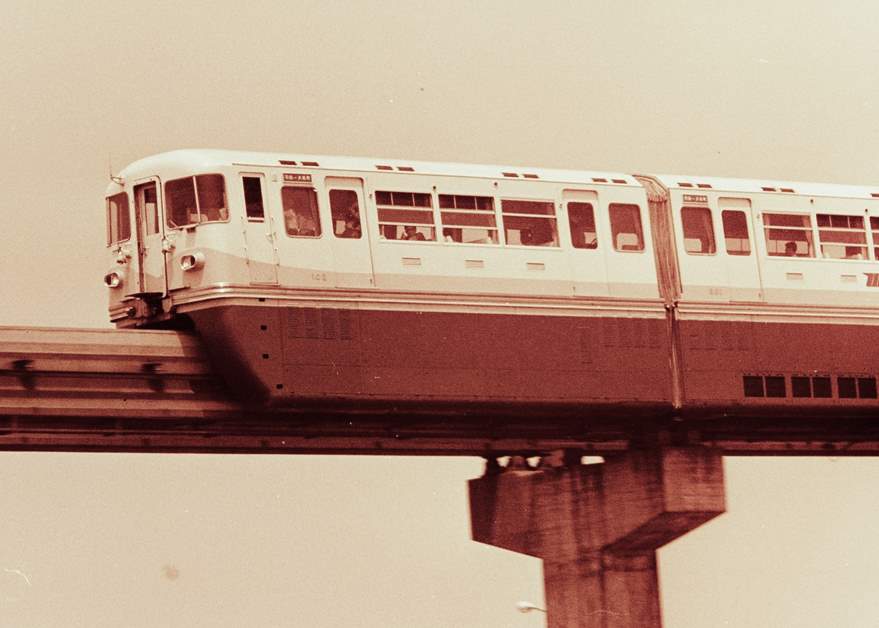
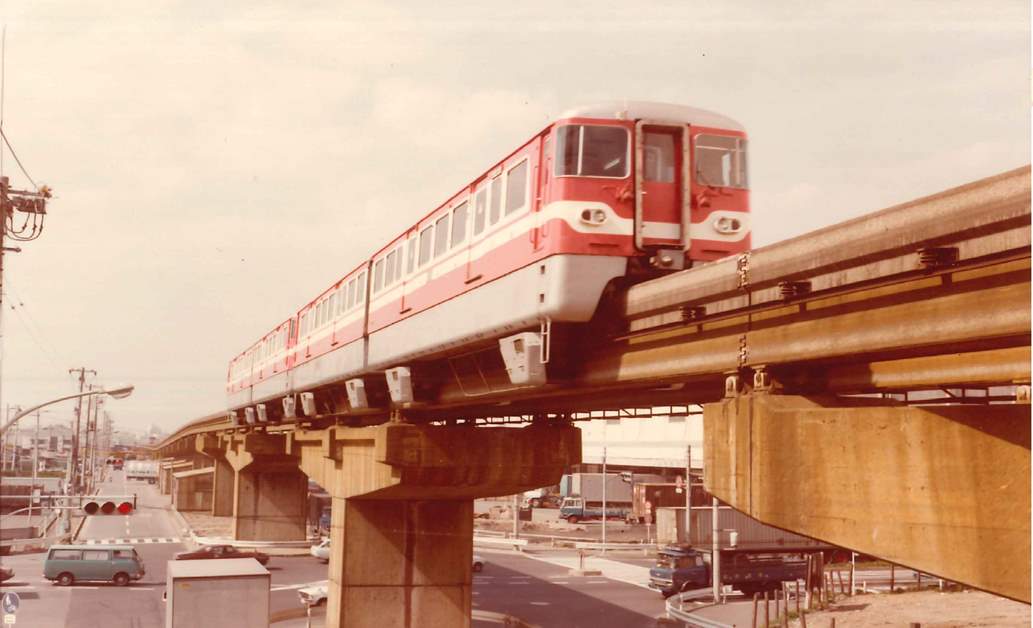
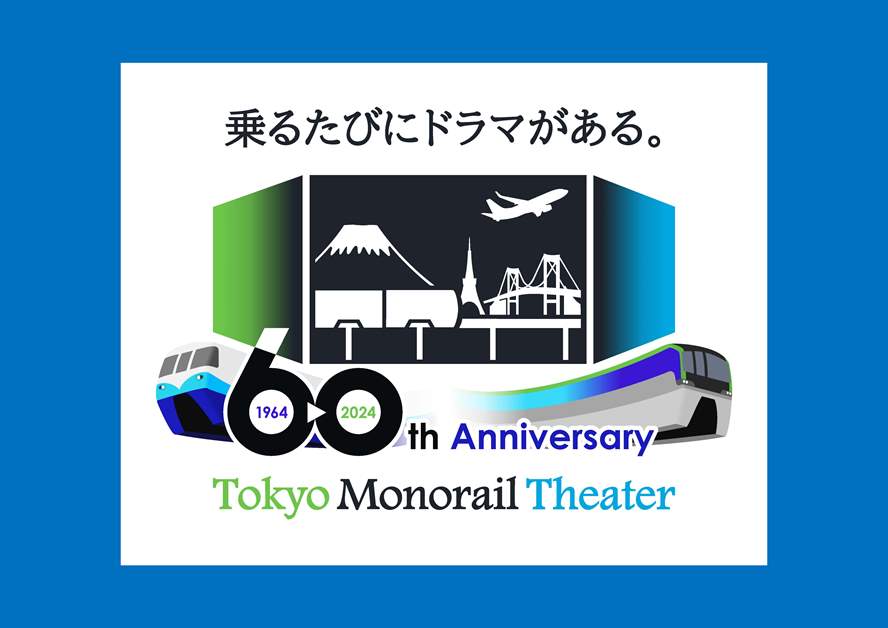
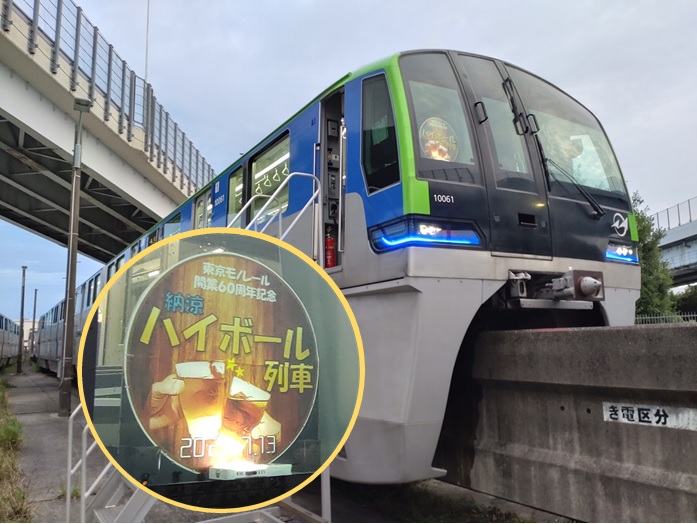
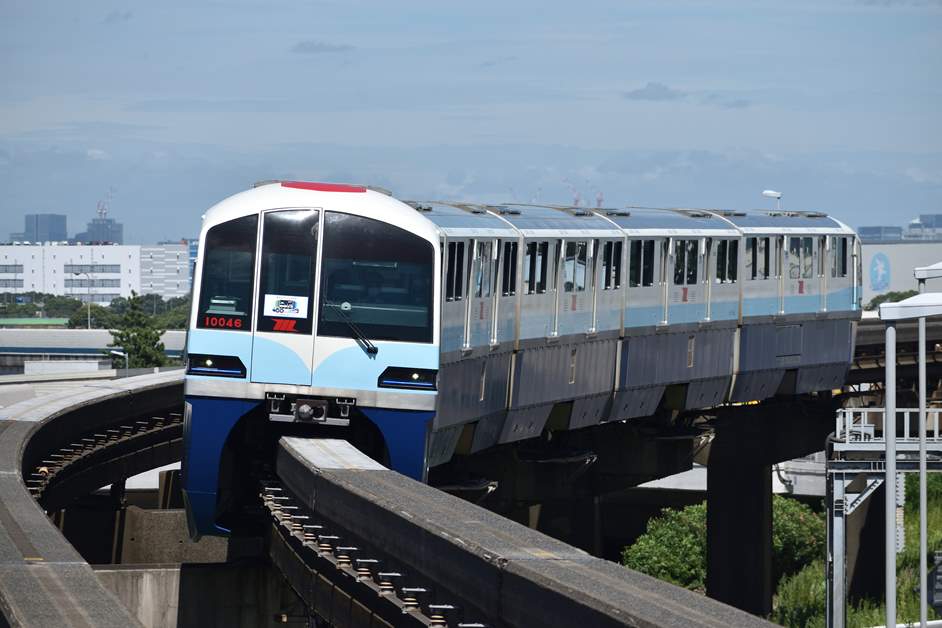
(%E7%89%A9%E8%B2%A9).jpeg)
